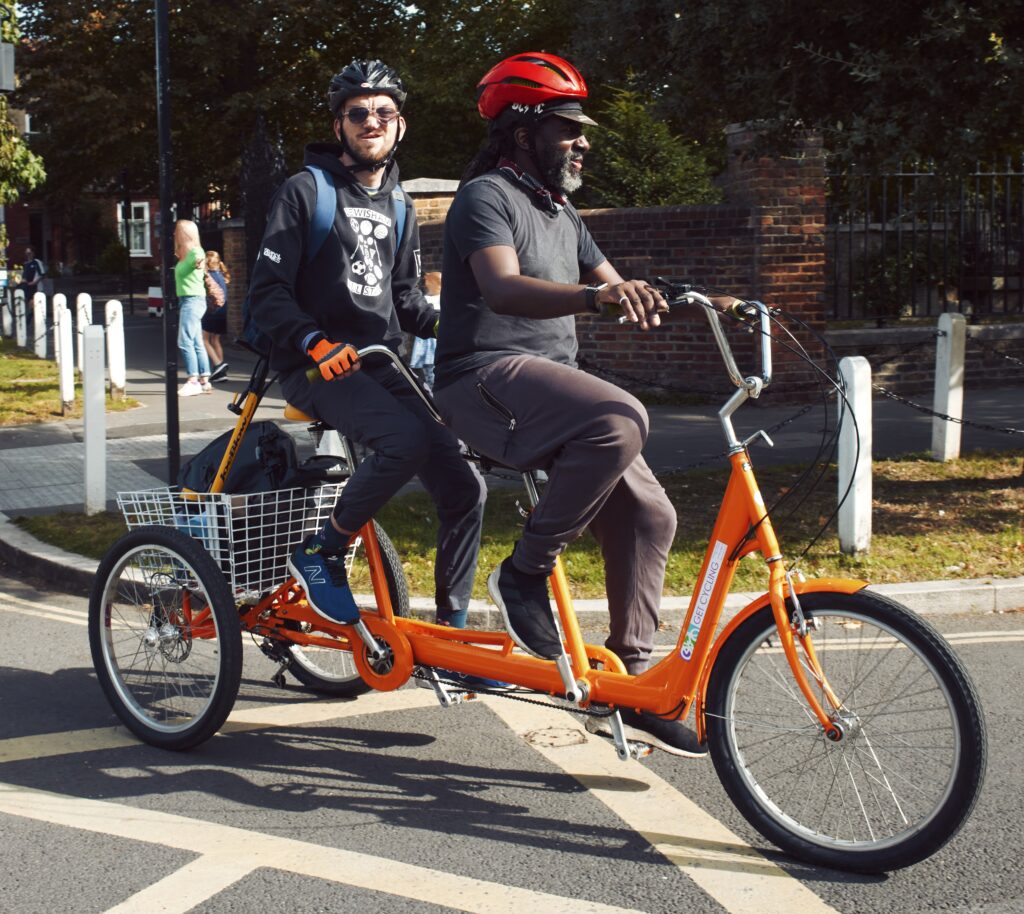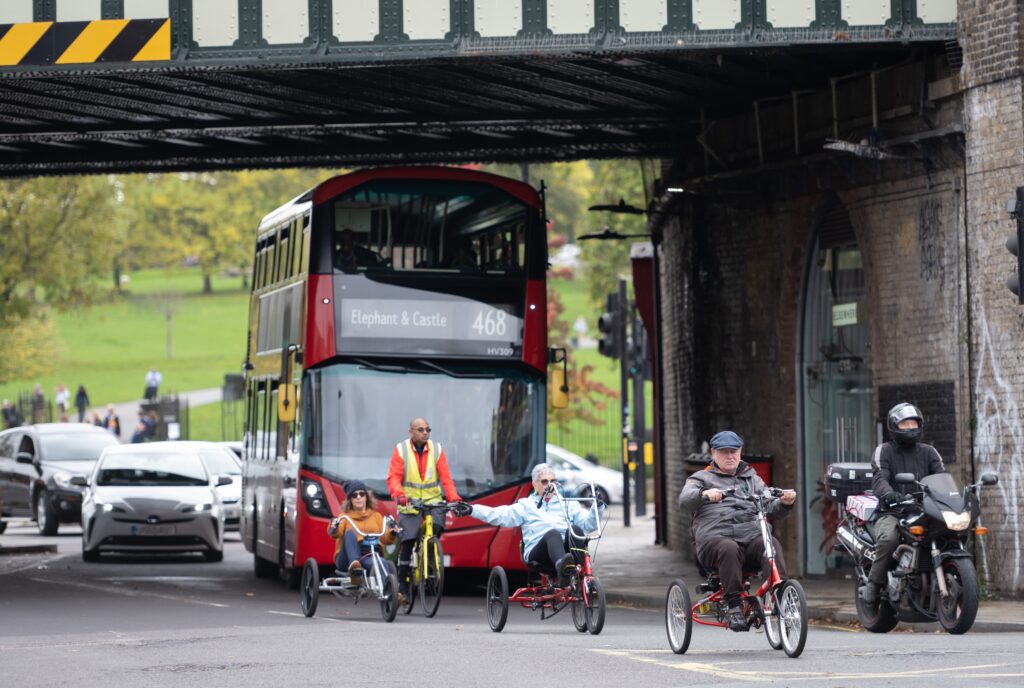Improving Disabled representation in cycling:
Disabled people have been under-represented in cycling and in cycling imagery for too long. For example, few people know that the world’s first cyclist was the handcyclist Stephan Farffler in the 17th century. Yes, that’s right, there was cycling among Disabled people long before non-disabled people were cycling. The history of Disabled people cycling didn’t stop there, though. Around a century ago, Rosa May Billinghurst was a suffragette who was charging police lines with her handcycle. Yet there remains a widespread belief that Disabled people don’t cycle.
Part of the belief comes from lack of depictions of Disabled cyclists in ordinary cycling circumstances (or lack of visibility of disability if there is a depiction). Too often, when national or local government or organisations like British Cycling, Sustrans, Active Travel England have wanted to depict cycling, they haven’t had access to images of Disabled cyclists that they could use.

Free to use, high-quality images of Disabled cyclists:
So, this Disability History Month, at Wheels for Wellbeing we’ve launched our Disabled Cycling Photobank to help correct the historic imbalance in cycling imagery.
In the past, the right image for the intended use hasn’t been easily available, or didn’t have appropriate consents.
Now, with funding through Active Travel England we’ve been able to set up the Wheels for Wellbeing photobank of Disabled cyclists. It is full of high-quality images you can download for free. The photobank is growing all the time, giving you the chance to help right the historic imbalance and show how Disabled people are using cycling for transport, leisure, fun and exercise in all weathers, at all times of day and in all sorts of places.
To access the photos, please go to https://wfwimages.free.resourcespace.com, and click on the link towards the bottom to “Apply for an account”. It will usually take a couple of days to approve your application as each account needs to be manually approved.
Photos have generally been uploaded with no, or minimal, cropping. This is so users can select for themselves how tightly to focus on the subject of the photo, and are able to select photos to use in situations where a large area of background is needed to one side (for example with text overlaid). Beyond the rare instances of cropping, the only edits are blurring / pixelating of the faces of passers-by and motor vehicle registration plates. Users are themselves welcome to make standard adjustments to factors like brightness and contrast.

Donate your images to improve representation further:
A large majority of the images at launch have been taken specially for inclusion in the photobank, with the models often being participants in Wheels for Wellbeing led rides around south London to whom we are very grateful. Partners nationwide are helping provide photos with a wider geographic spread, too.
If you have photos of Disabled cyclists where the photographer and the cyclist/s would be happy for the image to be included in the photobank, please let us know and we will be delighted to send you a consent form to complete. Please email ben@wheelsforwellbeing.org.uk for blank consent forms or with other queries.

